An empirical evaluation of sampling methods for the classification of imbalanced data
- PMID: 35901023
- PMCID: PMC9333262
- DOI: 10.1371/journal.pone.0271260
An empirical evaluation of sampling methods for the classification of imbalanced data
Abstract
In numerous classification problems, class distribution is not balanced. For example, positive examples are rare in the fields of disease diagnosis and credit card fraud detection. General machine learning methods are known to be suboptimal for such imbalanced classification. One popular solution is to balance training data by oversampling the underrepresented (or undersampling the overrepresented) classes before applying machine learning algorithms. However, despite its popularity, the effectiveness of sampling has not been rigorously and comprehensively evaluated. This study assessed combinations of seven sampling methods and eight machine learning classifiers (56 varieties in total) using 31 datasets with varying degrees of imbalance. We used the areas under the precision-recall curve (AUPRC) and receiver operating characteristics curve (AUROC) as the performance measures. The AUPRC is known to be more informative for imbalanced classification than the AUROC. We observed that sampling significantly changed the performance of the classifier (paired t-tests P < 0.05) only for few cases (12.2% in AUPRC and 10.0% in AUROC). Surprisingly, sampling was more likely to reduce rather than improve the classification performance. Moreover, the adverse effects of sampling were more pronounced in AUPRC than in AUROC. Among the sampling methods, undersampling performed worse than others. Also, sampling was more effective for improving linear classifiers. Most importantly, we did not need sampling to obtain the optimal classifier for most of the 31 datasets. In addition, we found two interesting examples in which sampling significantly reduced AUPRC while significantly improving AUROC (paired t-tests P < 0.05). In conclusion, the applicability of sampling is limited because it could be ineffective or even harmful. Furthermore, the choice of the performance measure is crucial for decision making. Our results provide valuable insights into the effect and characteristics of sampling for imbalanced classification.
Conflict of interest statement
The authors have declared that no competing interests exist.
Figures
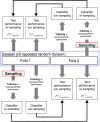
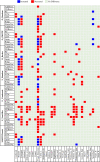
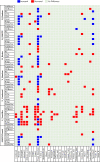


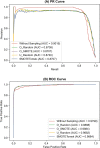
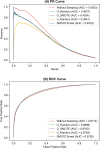
References
-
- Haixiang G, Yijing L, Shang J, Mingyun G, Yuanyue H, Bing G. Learning from class-imbalanced data: Review of methods and applications. Expert Syst Appl. 2017;73:220–39.
-
- Bolton RJ, Hand DJ. Statistical fraud detection: A review. Stat Sci. 2002;17(3):235–55.
-
- Yang Z, Tang W, Shintemirov A, Wu Q. Association rule mining-based dissolved gas analysis for fault diagnosis of power transformers. IEEE Trans Syst Man Cybern C Appl Rev. 2009;39(6):597–610.
-
- Zhu Z-B, Song Z-H. Fault diagnosis based on imbalance modified kernel Fisher discriminant analysis. Chem Eng Res Des. 2010;88(8):936–51.
-
- Khreich W, Granger E, Miri A, Sabourin R. Iterative Boolean combination of classifiers in the ROC space: An application to anomaly detection with HMMs. Pattern Recognit. 2010;43(8):2732–52.
Publication types
MeSH terms
LinkOut - more resources
Full Text Sources
Medical

